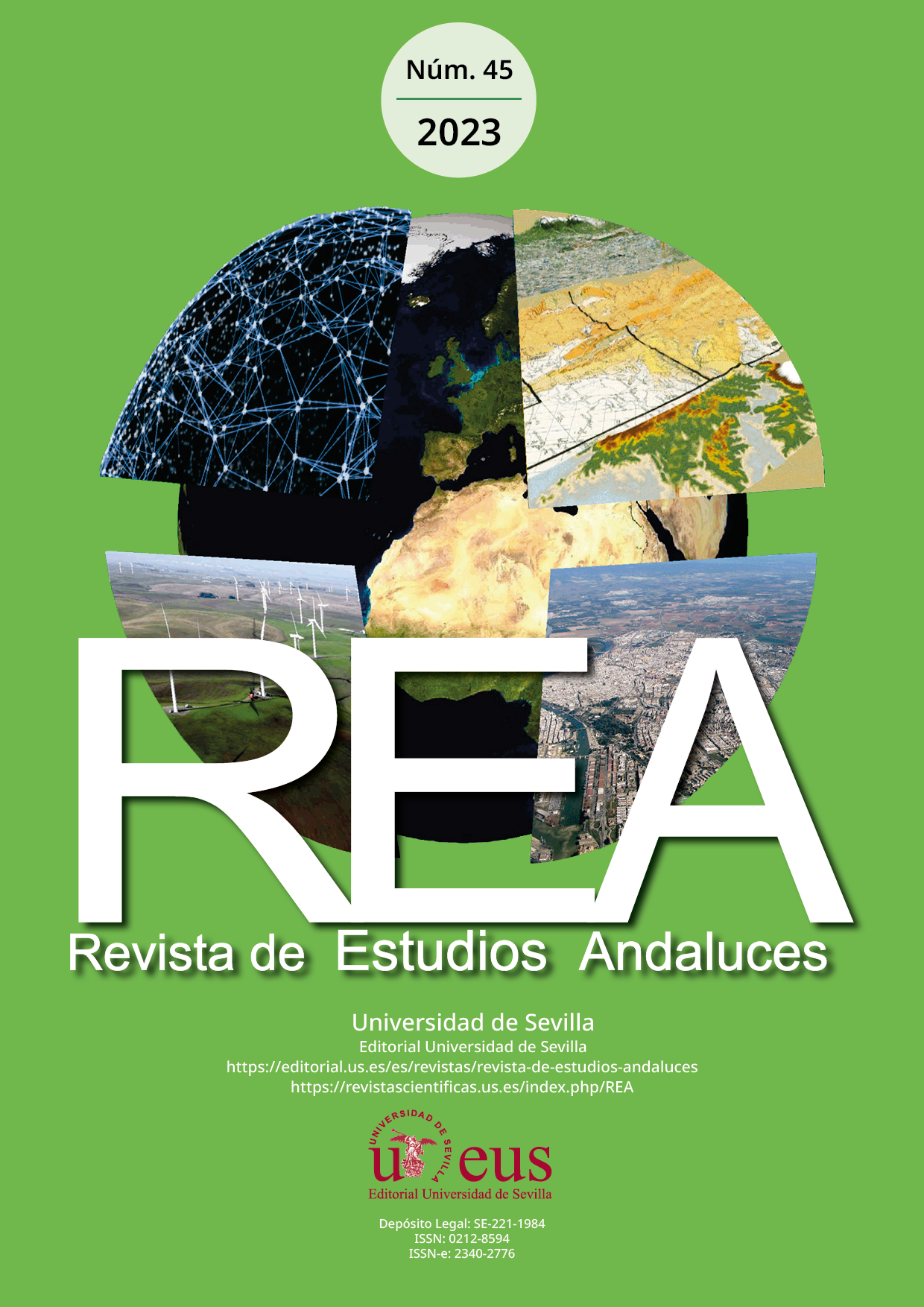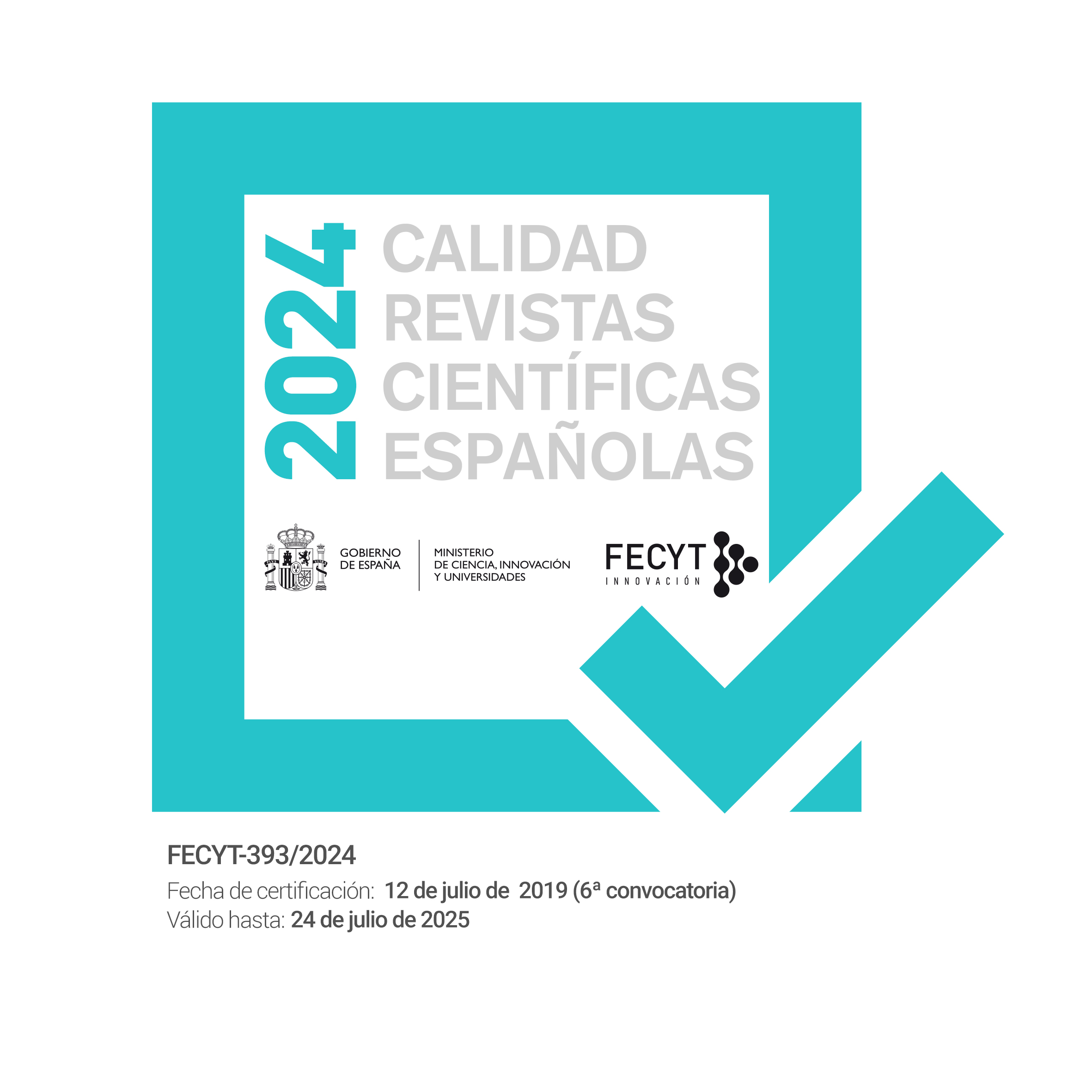Demand Responsive Transport in Italian rural areas: state of the art of technical characteristics and level of innovation of 35 case studies
DOI:
https://doi.org/10.12795/rea.2023.i45.07Palabras clave:
Transporte a Demanda (TAD), Zonas de baja demanda, Zonas rurales, Servicios a demanda, Transporte públicoResumen
En los últimos años se ha producido un despoblamiento progresivo de las zonas rurales debido a la escasa oferta de servicios esenciales: las consecuencias de ello son el envejecimiento generalizado y la marginación de la población residente.
Este trabajo pretende centrar la atención en el Transporte a Demanda (TAD) como solución a los problemas de transporte público en estos territorios. Para ello, a través de la investigación en la web y el análisis del Marco de Acuerdos de Proyectos de las Regiones, se han identificado 35 servicios rurales de TAD implantados en Italia con el fin de analizar sus características técnicas y su estado de innovación tecnológica.
Para comparar los servicios de TAD en el mismo contexto histórico y tecnológico, el estudio se centró en estudios de casos realizados a partir de 2010. Los resultados obtenidos se clasificaron en función de la distancia desde los principales centros (zonas d’hinterland, intermedias y periféricas/ultraperiféricas), con la adición de una cuarta categoría relativa a los servicios turísticos extraurbanos. A los servicios TAD seleccionados, evaluados en función de sus principales características técnicas (sistema de reserva, coste del servicio, itinerario, paradas, disponibilidad de la aplicación), se les asignó una puntuación de flexibilidad respectiva basada en el modelo de servicio utilizado.
Los resultados muestran que la consecución de los niveles más altos de flexibilidad del servicio sólo es posible a través de una enorme financiación pública (el 74% de los casos de TAD analizados tienen un grado medio de flexibilidad), el coste del ticket de los servicios TAD debe ser limitado (en el 49% de los casos es igual al coste del transporte público tradicional) con el fin de atraer a los usuarios, la mayoría de los proveedores de transporte ofrecen solo una opción de reserva para reducir los costes y el uso de herramientas innovadoras a la hora de reservar estos servicios es todavía limitado.
Descargas
Citas
Acierno, A. (2015). Pianificare paesaggi marginali: le aree interne del cilento. BDC. Bollettino Del Centro Calza Bini, 15(1), 211-231. https://doi.org/10.6092/2284-4732/3779
Alonso-González, M. J., Liu, T., Cats, O., Van Oort, N., & Hoogendoorn, S. (2018). The potential of demand-responsive transport as a complement to public transport: An assessment framework and an empirical evaluation. Transportation Research Record, 2672(8), 879-889. https://doi.org/10.1177/0361198118790842
Arlotti, M., & Cerea, S. (2021). Invecchiare a domicilio nei contesti urbani e nelle aree interne. Fragilità, isolamento sociale e senso di solitudine.
Attard, M., Camilleri, M. P., & Muscat, A. (2020). The technology behind a shared demand responsive transport system for a university campus. Research in Transportation Business & Management, 36, 100463. https://doi.org/10.1016/j.rtbm.2020.100463
Bacci, E., Cotella, G., & Brovarone, E. V. (2021). La sfida dell’accessibilità nelle aree interne: Riflessioni a partire dalla Valle Arroscia. Territorio. https://doi.org/10.3280/TR2021-096007
Barreto, L., Amaral, A., & Baltazar, S. (2018, September). Mobility as a Service (MaaS) in rural regions: An overview. In 2018 International Conference on Intelligent Systems (IS) (pp. 856-860). IEEE. https://doi.org/10.1109/IS.2018.8710455
BBCStoryWorks. (sd). Bringing Doctors to the Patients. Opgehaald van BBC StoryWorks: https://www.bbc.com/storyworks/specials/world-of-possibility/bringing-doctors-to-the-patients/
Borghi, E. (2017). Piccole Italie: le aree interne e la questione territoriale. Donzelli Editore.
Brake, J., Nelson, J. D., & Wright, S. (2004). Demand responsive transport: towards the emergence of a new market segment. Journal of Transport Geography, 12(4), 323-337. https://doi.org/10.1016/j.jtrangeo.2004.08.011
Bruzzone, F., Scorrano, M., & Nocera, S. (2021). The combination of e-bike-sharing and demand-responsive transport systems in rural areas: A case study of Velenje. Research in Transportation Business & Management, 40, 100570. https://doi.org/10.1016/j.rtbm.2020.100570
Burlando, C., Ivaldi, E., & Ciacci, A. (2021). Seniors’ Mobility and Perceptions in Different Urban Neighbourhoods: A Non-Aggregative Approach. Sustainability, 13(12), 6647. https://doi.org/10.3390/su13126647
Calabrò, G., Inturri, G., Le Pira, M., Pluchino, A., & Ignaccolo, M. (2020). Bridging the gap between weak-demand areas and public transport using an ant-colony simulation-based optimization. Transportation Research Procedia, 45, 234-241. https://doi.org/10.1016/j.trpro.2020.03.012
Campisi, T., Canale, A., Ticali, D., & Tesoriere, G. (2021). Innovative solutions for sustainable mobility in areas of weak demand. Some factors influencing the implementation of the DRT system in Enna (Italy). AIP Conference Proceedings, 2343 (1), 090005. AIP Publishing LLC. https://doi.org/10.1063/5.0047765
Carrosio, G., Lucatelli, S., & Barca, F. (2018). Le aree interne da luogo di disuguaglianza a opportunità per il paese. Le sostenibili carte dell’Italia, pp. 167-186. http://hdl.handle.net/11368/2918423
Cipolloni, C. (2018). Le politiche di contrasto al fenomeno dello spopolamento nelle Aree interne. Cit, 8(5).
Copus, A., & Hörnström, L. (2011). The new rural Europe: towards rural cohesion policy. Nordregio. urn:nbn:se:norden:org:diva-131
Cotella, G., & Brovarone, E. V. (2020). The Italian national strategy for inner areas: A place-based approach to regional development. Dilemmas of regional and local development, pp. 50-71. https://doi.org/10.4324/9780429433863-5
Coutinho, F. M., van Oort, N., Christoforou, Z., Alonso-González, M. J., Cats, O., & Hoogendoorn, S. (2020). Impacts of replacing a fixed public transport line by a demand responsive transport system: Case study of a rural area in Amsterdam. Research in Transportation Economics, 83, 100910. https://doi.org/10.1016/j.retrec.2020.100910
Diana, M., Quadrifoglio, L., & Pronello, C. (2007a). Emissions of demand responsive services as an alternative to conventional transit systems. Transportation Research Part D: Transport and Environment, 12(3), 183-188. https://doi.org/10.1016/j.trd.2007.01.009
Diana, M., Quadrifoglio, L., & Pronello, C. (2009b). A methodology for comparing distances traveled by performance-equivalent fixed-route and demand responsive transit services. Transportation planning and technology, 32(4), 377-399. https://doi.org/10.1080/03081060903119618
DOKICI (2018). Notre concept. Opgehaald van Le retour du médecin près de chez soi - Service de cabinets médicaux mobiles omnipraticiens. https://www.dokici.fr/
Dytckov, S., Lorig, F., Davidsson, P., Holmgren, J., & Persson, J. A. (2020). Modelling commuting activities for the simulation of demand responsive transport in rural areas. International Conference on Vehicle Technology and Intelligent Transport Systems, 1, pp. 89-97. https://doi.org/10.5220/0009367000890097
Dytckov, S., Persson, J. A., Lorig, F., & Davidsson, P. (2022). Potential Benefits of Demand Responsive Transport in Rural Areas: A Simulation Study in Lolland, Denmark. Sustainability, 14(6), 3252. https://doi.org/10.3390/su14063252
EUROSTAT (2016). Number of passenger cars per 1000 inhabtants, 2016. Opgehaald van EUROSTAT https://ec.europa.eu/eurostat/statistics-explained/images/d/da/Number_of_passenger_cars_per_1000_inhabitants%2C_2016_rev.png
Franco, P., Johnston, R., & McCormick, E. (2020). Demand responsive transport: Generation of activity patterns from mobile phone network data to support the operation of new mobility services. Transportation Research Part A: Policy and Practice, 131, 244-266. https://doi.org/10.1016/j.tra.2019.09.038
Heeser, A. (2019). DB Medibus: Mit der Arztpraxis auf vier Rädern gegen den Landarztmangel. kma-Klinik Management aktuell, 24(06), 88-89. https://doi.org/10.1055/s-0039-1692815
Hirsch, N., & Fredericks, C. (2001). Rural doctors and retention. 6th National Rural Health Conference. Canberra.
Hult, Å., Perjo, L., & Smith, G. (2021). Shared mobility in rural contexts: Organizational insights from five mobility-as-a-service pilots in Sweden. Sustainability, 13(18), 10134. https://doi.org/10.3390/su131810134
Jain, S., Ronald, N., Thompson, R., & Winter, S. (2017). Predicting susceptibility to use demand responsive transport using demographic and trip characteristics of the population. Travel Behaviour and Society, 6, 44-56. https://doi.org/10.1016/j.tbs.2016.06.001
Kisla, R., Tuba, K., & Yildiz, H. S. (2016). Demand responsive transport as being paratransit mode: Istanbul modelling. Transportation Research Procedia, 14, 3247-3256. https://doi.org/10.1016/j.trpro.2016.05.270
König, A., & Grippenkoven, J. (2020). The actual demand behind demand-responsive transport: Assessing behavioral intention to use DRT systems in two rural areas in Germany. Case Studies on Transport Policy, 8(3), 954-962. https://doi.org/10.1016/j.cstp.2020.04.011
Laws, R., Enoch, M., Ison, S., & Potter, S. (2009). Demand responsive transport: a review of schemes in England and Wales. Journal of Public Transportation, 12(1), 19-37. https://doi.org/10.5038/2375-0901.12.1.2
Mageean, J., & Nelson, J. D. (2003). The evaluation of demand responsive transport services in Europe.. Journal of Transport Geography, 11(4), 255-270. https://doi.org/10.1016/S0966-6923(03)00026-7
Marek, D., & Baun, M. (2014). Cohesion policy in the European Union. Bloomsbury Publishing. https://doi.org/10.1007/978-1-137-47192-5
Mastronardi, L., & Romagnoli, L. (2020). Community-Based Cooperatives: A New Business Model for the Development of Italian Inner Areas. Sustainability, 12(5), 2082. https://doi.org/10.3390/su12052082
MedicinsDuMonde. (sd). Tunisie. Opgehaald van Medicins Du Monde. https://medecinsdumonde.be/regions/tunisie
Navidi, Z., Ronald, N., & Winter, S. (2018). Comparison between ad-hoc demand responsive and conventional transit: a simulation study. Public Transport, 10(1), 147-167. https://doi.org/10.1007/s12469-017-0173-z
Nelson, J. D., Ambrosino, G., & Romanazzo, M. (2004). Demand responsive transport services: towards the flexible mobility agency.
Papanikolaou, A., & Basbas, S. (2021). Analytical models for comparing Demand Responsive Transport with bus services in low demand interurban areas. Transportation Letters, 13(4), 255-262. https://doi.org/10.1080/19427867.2020.1716474
Papanikolaou, A., Basbas, S., Mintsis, G., & Taxiltaris, C. (2017). A methodological framework for assessing the success of Demand Responsive Transport (DRT) services. Transportation Research Procedia, 24, 393-400. https://doi.org/10.1016/j.trpro.2017.05.095
Pezzi, M. G., & Punziano, G. (2017). La categoria di distanza come proxy delle questioni ruralità, perifericità e sviluppo locale nella strategia nazionale per le aree interne. La categoria di distanza come proxy delle questioni ruralità, perifericità e sviluppo locale nella strategia nazionale per le aree interne, 167-192. https://doi.org/10.3280/SP2017-003009
Punziano, G. (2019). Salute, mobilità, istruzione: strategie per le aree interne. Scienze Regionali, 18(1), 65-92. https://doi.org/10.14650/92353
Schlüter, J., Bossert, A., Rössy, P., & Kersting, M. (2021). Impact assessment of autonomous demand responsive transport as a link between urban and rural areas. Research in Transportation Business & Management, 39, 100613. https://doi.org/10.1016/j.rtbm.2020.100613
Schumacher, O. (2020). DB Medibus – The Mobile Clinic. Berlino: Deutsche Bahn AG.
SNAI. (2013). Strategia nazionale per le Aree interne: definizione, obiettivi, strumenti e governance. Accordo di Partenariato 2014-2020.
Sörensen, L., Bossert, A., Jokinen, J. P., & Schlüter, J. (2021). How much flexibility does rural public transport need?–Implications from a fully flexible DRT system. Transport Policy, 100, 5-20. https://doi.org/10.1016/j.tranpol.2020.09.005
UVAL. (2014). A strategy for inner areas in Italy: definition, objectives, tools and governance. Casavola, Paola.
Velaga, N. R., Beecroft, M., Nelson, J. D., Corsar, D., & Edwards, P. (2012). Transport poverty meets the digital divide: accessibility and connectivity in rural communities. Journal of Transport Geography, 21, 102-112. https://doi.org/10.1016/j.jtrangeo.2011.12.005.
Venkatesh, V., Morris, M. G., Davis, G. B., & Davis, F. D. (2003). User acceptance of information technology: Toward a unified view. MIS quarterly, 425-478. https://doi.org/10.2307/30036540
Wang, C., Quddus, M., Enoch, M., Ryley, T., & Davison, L. (2015). Exploring the propensity to travel by demand responsive transport in the rural area of Lincolnshire in England. Case Studies on Transport Policy, 3(2), 129-136. https://doi.org/10.1016/j.cstp.2014.12.006
Westerlund, Y., Stahl, A., Nelson, J., & Mageean, J. (2000). Transport telematics for elderly users: Successful use of automated booking and call-back for demand responsive transport services in Gothenburg. Proceedings of the 7th World Congress on Intelligent Systems.
Descargas
Publicado
Cómo citar
Número
Sección
Licencia
Derechos de autor 2023 Revista de Estudios Andaluces

Esta obra está bajo una licencia internacional Creative Commons Atribución-NoComercial-CompartirIgual 4.0.
La edición electrónica de la Revista de Estudios Andaluces se ofrece en acceso abierto desde el número 28 publicado en 2011 hasta la actualidad. Las ediciones impresa y electrónica de esta Revista son editadas por la Editorial de la Universidad de Sevilla, siendo necesario citar la procedencia en cualquier reproducción parcial o total.
La Revista de Estudios Andaluces no cobra tasas por el envío de trabajos, ni tampoco cuotas por la publicación de sus artículos. La Revista es gratuita desde el momento de la publicación de cada número y sus contenidos se distribuyen con la licencia “CreativeCommons Atribución-NoComercial-SinDerivar 4.0 Internacional” , que permite al usuario de la Revista de Estudios Andaluces criterios que cumplen con la definición de open access de la Declaración de Budapest en favor del acceso abierto. Puede consultar desde aquí la versión informativa y el texto legal de la licencia. Esta circunstancia ha de hacerse constar expresamente de esta forma cuando sea necesario.







